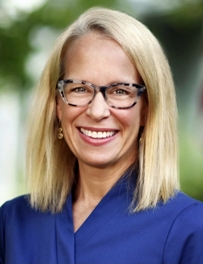How Often Do Minnesota Legislative Specials Determine Partisan Control of a Chamber?
November’s SD 45 contest will be the fourth time since 1973 in which party control is on the line in a special state house or senate election
 The resignation earlier this month by DFLer Kelly Morrison from the state’s 45th Senate District to run for U.S. Representative Dean Phillip’s open 3rd CD seat, gives Minnesota Republicans the opportunity to flip both legislative chambers this November.
The resignation earlier this month by DFLer Kelly Morrison from the state’s 45th Senate District to run for U.S. Representative Dean Phillip’s open 3rd CD seat, gives Minnesota Republicans the opportunity to flip both legislative chambers this November.
The GOP only needs to net four seats to gain a majority in the House of Representatives and any sort of national Republican tailwind will likely see the party win enough of the 13 seats they lost by single digits in 2022 to meet that number.
The SD 45 special is the only senate seat on the ballot this November, and a DFL loss would see their 34-33 majority in the Senate flip to the Republicans.
Morrison won Hennepin County’s SD 45 seat in 2022 by only 12.6 points against Tonka Bay realtor Kathleen Fowke who had never previously run for state office.
Seats have flipped in back-to-back cycles by wider margins than that and one of the few instances of a special election determining partisan control of a Minnesota legislative chamber in recent decades saw one party make gains of twice that amount.
In 2018, it was the Republicans who had a 34-33 majority in the state senate, but the resignation of Senate President Michelle Fischbach to become Lieutenant Governor on May 25th of that year meant the winner of her SD 13 seat would lead that nominee’s party into the majority caucus.
Fischbach had won SD 13 by 37.3 points in November 2016 (with Donald Trump similarly carrying the district by 33.8 points), and the contest was not expected to be competitive.
However, in November 2018’s special election – riding a Democratic wave – DFLer and Stearns County Commissioner Joe Perske lost to Republican State Representative Jeff Howe by just 14.8 points.
The GOP held the seat (and returned to its one-seat advantage), but the DFL gained 19 points in the district.
Since the Minnesota Legislature returned to running under party labels in 1973 (after a six-decade hiatus), there have been just two other special elections which determined partisan control of a chamber.
In January 1979, the House of Representatives convened with a 67-67 tie and a compromise agreement gave the speakership to Independent-Republican Rodney Searle with DFLers getting a few committee chairs.
However, one race in Dakota and Ramsey counties – HD 67A – saw former four-term Conservative Rep. Bob Pavlak defeat DFL incumbent and West St. Paul attorney Arnold Kempe by 3.6 points. Kempe contested the election on charges of unfair campaign practices concerning the number of roll call votes he was alleged to have missed by Pavlak’s campaign.
But Pavlak became ill that spring and in his absence the DFL voted that he could not vote on the question of his removal. As a result, the House voted to unseat him on May 18, 1979 on a party line vote of 67 to 66.
A special election was called for June 19th and Pavlak was easily renominated though Kempe was not a candidate due to health issues.
Instead, St. Paul labor leader Frank Rodriguez won the DFL primary and defeated Pavlak by 4.7 points in the special to give the DFL a 68 to 66 advantage in the chamber.
That two-seat majority lasted until December 5, 1979 when DFLer Stanley Enebo resigned to become associate director of the Minnesota Public Employees Retirement Association, reducing the party’s advantage to 67-66.
A special election was called for Enebo’s Minneapolis HD 60B district for January 17, 1980. Enebo had comfortably won the seat in November 1978 by 33.4 points.
Hennepin County Commissioner administrative assistant Donna Peterson eked out a 3.7-point win in the special against Minneapolis attorney Bob Lange to keep the seat in the DFL column. Republicans gained 29.7 points in the district in just 14 months but came up a little bit short and failed to return the chamber to a 67-67 tie.
For more history on the 20,000+ elections to state and federal office in Minnesota history and the nearly 16,000 candidates who appeared on the ballot, visit the Minnesota Historical Election Archive.
Follow Smart Politics on X/Twitter.

Hope that Eric, all of you reading this and your entire families have a sensational July 4th.
{Unrelated}
J Bowman (Democrat/Working Families; NY) & L Boebert (‘MAGA’ Republican; CO):
– Each garnered within a range of 41~45% districtwide, but Bowman was facing a single opponent whereas the opposition to Boebert was split – *five* ways in fact;
– Instant runoff voting (or equivalent) might well have doomed Boebert, while that balloting system would have been moot for Bowman;
– Boebert was both lucky and shrewd, in that she could – and did – relocate to a constituency more favorable to her electoral prospects, whereas Bowman chose neither to move to a ‘better’ district (central-city venue with more non-whites and fewer Jews, even left-leaning ones) nor to re-calibrate his brand of politics more tailored to his re-drawn constituency;
Happy Fourth of July – and the rest of the ‘dog days of summer’, fellow readers of this blog!